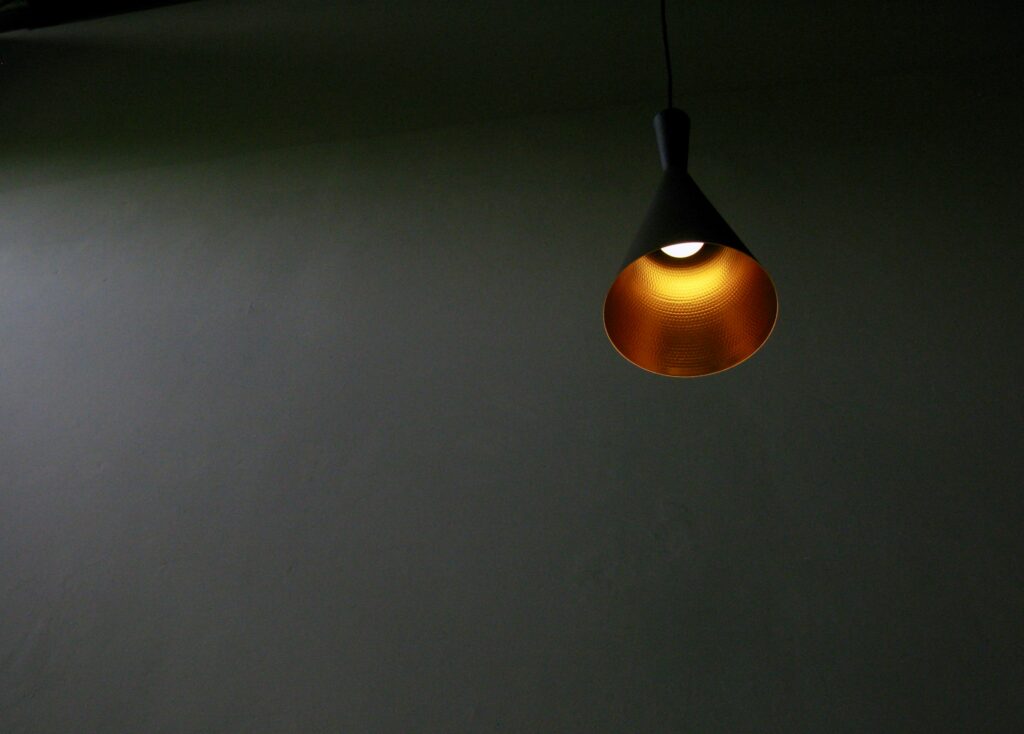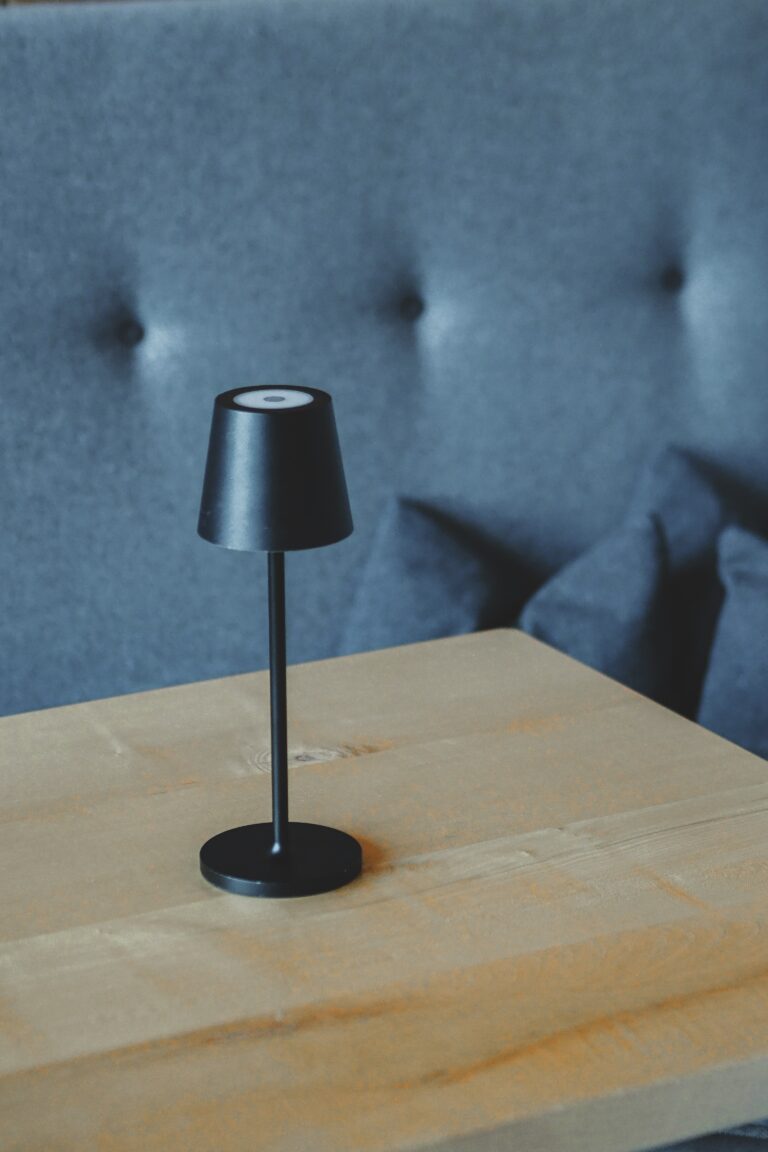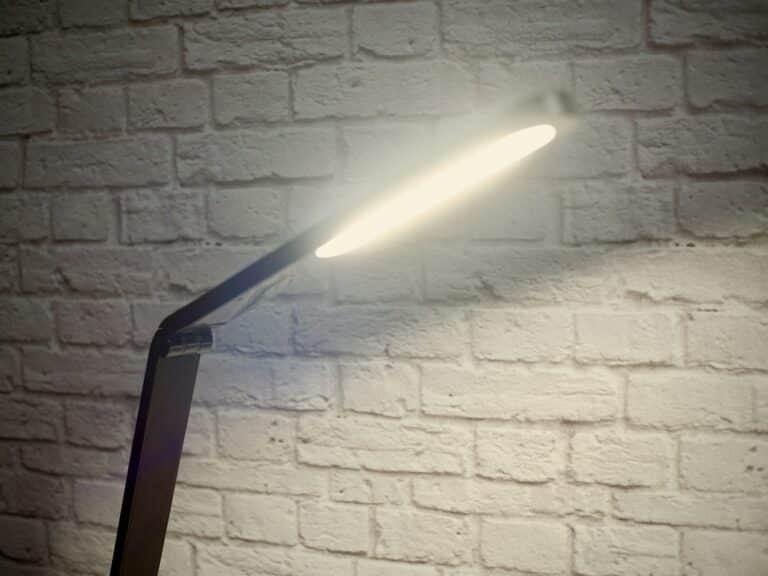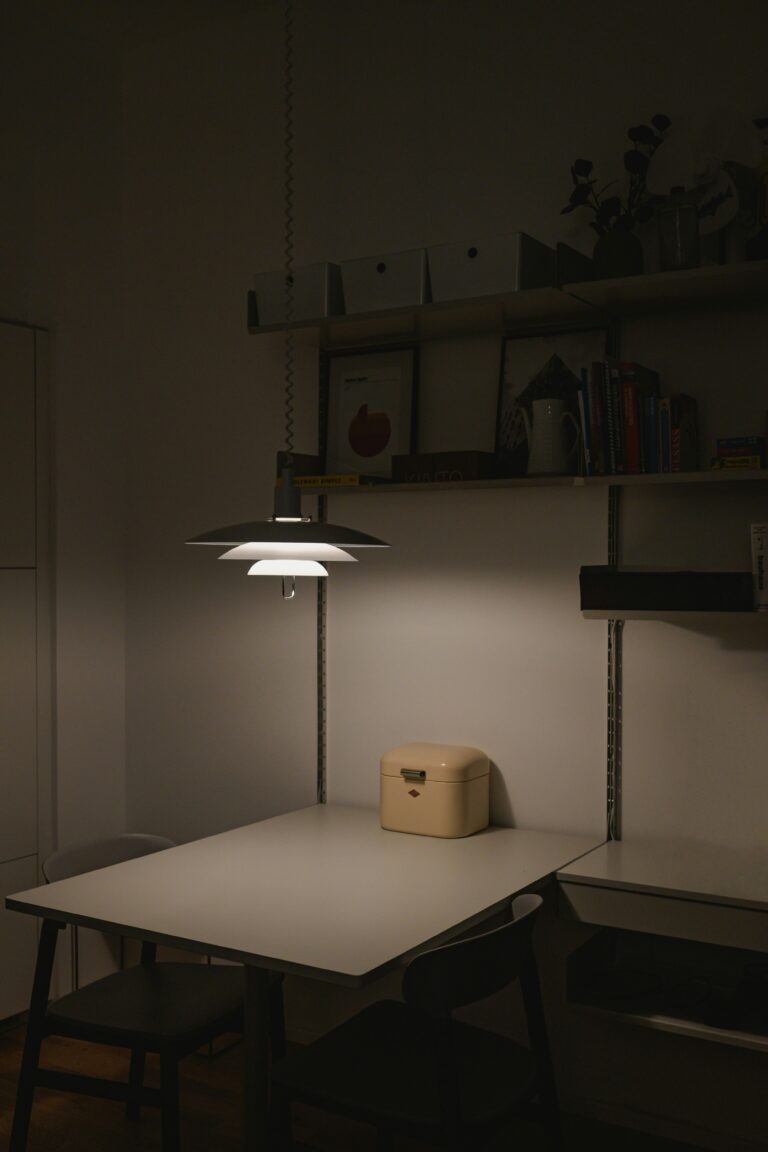You push open the door, flick on the light switch, and are instantly enveloped in a warm, calming glow. Your tense muscles begin to relax, your racing thoughts slow down, and a smile creeps onto your face. The right lighting can do more than just illuminate a room; it can transform the atmosphere, enhance your mood, and uplift your spirit. 🌟💡

Welcome to the fascinating world of lighting design. This field combines the science of vision and human perception with the art of light. It can take your home or workspace from ordinary to extraordinary, all while supporting your mental wellbeing.
Lighting: An Underappreciated Art Form
Many people overlook the importance of proper lighting. They settle for the default overhead lights that come with their house or apartment, not realizing the potential they have to create a truly unique and personalized space. To help you take advantage of the power of lighting, this guide will explore the fundamentals of lighting design for mood enhancement and spirit-boosting.
We’ll delve into the different types of lighting, how to layer them for maximum impact, and how to use color temperature to create the perfect ambiance for any occasion. 🌈💡 By the end of this article, you’ll be equipped with the knowledge and tools to create an environment that not only looks fantastic but also feels fantastic.
Lights, Emotions, Action!
Ever noticed how certain restaurants are lit in a way that makes the food look even more appetizing, or how some shops use lighting to highlight their products? That’s no accident. Lighting plays a significant role in influencing our emotions and behaviors. Bright, cool lighting can invigorate us and keep us alert, while warm, dim lighting can soothe and relax us.
In this guide, we will explain how you can harness the power of light to enhance your mood and boost your spirits. We’ll discuss the science behind lighting and mood, and provide practical advice on how to use different types of light to create the desired emotional response.
Designing with Light
Designing with light is not just for architects and interior designers. With a basic understanding of lighting principles and a bit of creativity, anyone can transform their living or working space into a sanctuary of comfort and positivity. Whether you’re designing a home office, a cozy reading nook, or a lively entertainment area, we’ll guide you on how to choose and arrange your lights for the best results.
So, ready to embark on this illuminating journey? 🚀💡 Strap in, as we’re about to dive deep into the world of lighting and discover how it can enhance your mood, lift your spirits, and transform your space.
Understanding the Power of Light
Light is a powerful tool in influencing our mood and behavior. Our environments often dictate our emotions, with lighting playing a pivotal role in setting the tone and ambience. From the soft glow of a bedside lamp to the natural sunlight streaming through the windows, different light sources can either lift our spirits or induce a calming effect. This article will guide you through the science behind light and mood enhancement, and how to use lighting effectively in your space.
Lighting influences our physiological and psychological processes in many ways. Research has shown that certain types of light can affect our circadian rhythms, sleep patterns, and even our mental health. For instance, exposure to bright light in the morning can help reset our biological clock, improve our mood, and increase our alertness. On the other hand, dim lights in the evening can promote relaxation and prepare us for sleep.
But how does this all work? Our body’s internal clock, or circadian rhythm, is mainly regulated by light. Light receptors in our eyes send signals to our brain, which then regulates our sleep-wake cycle, body temperature, and hormone secretion. This process is crucial for our overall wellbeing and mood regulation. Understanding this can help us use light to our advantage, enhancing our mood and lifting our spirits when needed.
The Art of Mood Lighting: How to Illuminate Your Space Effectively
The art of mood lighting lies in understanding the type, intensity, and color of light. All these elements play a significant role in creating the right atmosphere. To get started, consider the purpose of the room and the mood you want to create. For instance, a study room requires bright, focused lighting for concentration, while a bedroom might need softer, warmer lights for relaxation.
Furthermore, think about the different types of lighting and how they can be used in your space. Ambient lighting, often known as general lighting, provides overall illumination for the room. Task lighting, on the other hand, is used for specific tasks such as reading or cooking. Accent lighting is used to highlight certain features or areas in the room. By combining these types of lighting strategically, you can enhance the mood and functionality of your space.
The color of light also plays a crucial role in mood enhancement. For instance, warm white light, which has a yellowish hue, can create a cozy, welcoming atmosphere. On the other hand, cool white light, which is brighter and more bluish, can make a space look modern and energetic. Experimenting with different colors can help you discover what works best for your space and mood.
Top Lighting Solutions for Mood Enhancement
Today’s market offers a wide array of lighting solutions designed to enhance mood and overall wellbeing. Let’s look at some of the top options available.
| Lighting Solution | Description | Best For |
|---|---|---|
| LED Lights | Energy-efficient, long-lasting, and available in a variety of color temperatures. | General and task lighting in any room. |
| Dimmable Lights | Allows you to adjust the brightness according to your needs and mood. | Bedrooms, living rooms, and dining areas. |
| Smart Lights | Can be controlled remotely and programmed to change color and intensity. | Creating different moods and scenes in your space. |
For a deeper understanding of how lighting can affect your mood, check out the YouTube video “How Lighting Affects Your Mood” by National Lighting.
Creating a Mood-Enhancing Lighting Plan
Creating a lighting plan that enhances mood involves considering the function of each room, the natural light available, and the types of artificial lighting that can supplement it. Start by observing the natural light that enters each room throughout the day. Which areas get the most light? Which areas are often in shadows? This information will guide you on where to add supplemental lighting.
Next, consider the activities that take place in each room. A workspace might require task lighting with a cool color temperature to enhance focus and productivity. Meanwhile, a living room might benefit from layered lighting—a mix of ambient, task, and accent lights—that can be adjusted depending on the time of day or activity.
Finally, consider incorporating smart lighting solutions into your plan. These devices allow you to control the intensity and color of your lights remotely, enabling you to create different moods at the touch of a button. Some smart lights can even simulate sunrise and sunset, helping to regulate your circadian rhythm and improve sleep quality.
Tips for Using Light to Boost Your Spirits
Using light to boost your spirits is not just about choosing the right fixtures or bulbs—it’s about knowing how and when to use them. Here are some tips to help you harness the power of light.
- Start your day with bright light: Exposing yourself to bright light in the morning can help reset your circadian rhythm, improve alertness, and elevate your mood.
- Use natural light whenever possible: Natural light is the best mood booster. Open your blinds and curtains during the day to let the sunshine in.
- Control light at night: Exposure to bright light in the evening can interfere with your sleep. Use dim lights in the evening and avoid screens before bedtime to promote better sleep.
For more tips on using light to enhance mood, check out the YouTube video “5 Lighting Tips to Improve Your Mood” by Lamps Plus.
Wrapping Up
Lighting is a powerful tool that can significantly influence our mood, productivity, and overall wellbeing. By understanding the science behind light and mood, and implementing a strategic lighting plan, you can transform your space into a mood-enhancing haven. Remember, the key is to experiment with different types of lighting and colors until you find what works best for you.
Conclusion
In wrapping up this comprehensive examination of software engineering, we must take a moment to revisit the key points raised and their implications for both the industry and those who operate within it. It is crucial to remember that, just as the digital age we live in continues to evolve, so too must our knowledge and understanding of this field. 🔄
One of the fundamental aspects we’ve scrutinized is the role of software development methodologies. The contrast between Waterfall and Agile, for example, reveals significant differences in approach and underscores the importance of choosing the right methodology for the project at hand. Understanding these methodologies is not just about knowing the steps involved, but grasping the philosophies underpinning them. It’s about comprehending the value of flexibility and adaptability in Agile, or the rigorous structure and planning inherent in Waterfall. 💡
We’ve also delved into the intricacies of software design patterns. Through dissecting the Singleton and Factory patterns, we’ve revealed their utility and specific use cases. Understanding these patterns is akin to adding more tools to your toolbelt; they’re resources to leverage when designing software solutions. Whether you’re seeking to manage global state or facilitate the creation of objects, these patterns can provide the architectural underpinning you need. 🧰
Moreover, we’ve ventured into the realm of data structures and algorithms, exploring their critical role in software engineering. From the versatility of Linked Lists to the power of Binary Search Trees, these structures can significantly enhance the efficiency of our applications. Paired with algorithms, like Quicksort or Dijkstra’s, they form the backbone of optimized, high-performing software solutions. 🚀
Further, we’ve analyzed the importance of solid principles in writing clean, maintainable code. We highlighted how each principle, from Single Responsibility to Dependency Inversion, contributes to creating code that is more understandable, flexible, and robust. We’ve stressed the importance of keeping these principles in mind as a way to elevate the quality of your work and the longevity of your software. 🎯
To fully appreciate these concepts, it’s essential to put them into practice. Hence, I encourage you to use what you’ve learned in your projects. Test out different methodologies, explore different design patterns, or experiment with different data structures and algorithms. The knowledge you’ve gained here is a springboard to greater proficiency and understanding in the field of software engineering.
As we draw to a close, I would like to thank you for your time and attention. Should you wish to further delve into these topics, I recommend sources like W3Schools, Geeks for Geeks, and Stack Overflow. Your engagement and feedback are invaluable; feel free to comment below with your thoughts, questions, or insights. Please also consider sharing this article with colleagues or friends who might find it useful.
Ultimately, the key to successful software engineering is continuous learning. 📚 As we continue to navigate through the ever-changing landscape of the digital age, let us keep pushing boundaries, challenging norms, and driving innovation. And remember – knowledge shared is knowledge doubled. Let’s keep the conversation going.
So, until next time, happy coding! 💻



